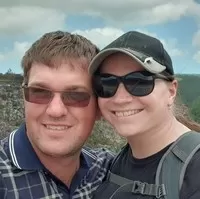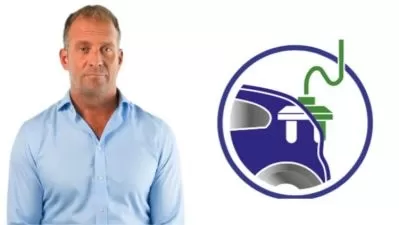The short VFD / AC Drive / Motor Drive course for beginners.
Johanna Christina Hälbich
3:17:42
Description
Short, Crisp and Clear videos on how to install, program and operate a Variable Frequency Drive. (Beginner level)
What You'll Learn?
- Gain a basic understanding of the inner workings of a Variable Frequency Drive / AC drive / Motor Drive.
- Gain a basic understanding of Pulse Width Modulation (PWM) and carrier frequencies.
- Wire the Power Circuit for a single or 3 phase VFD / AC drive / Motor Drive in any country.
- Install a VFD in a manner that prevents earth leakage trips, and without deactivating the internal noise filter.
- Decrypt the model number on the VFD / AC drive / Motor Drive / Inverter drive.
- Wire the Main Circuit.
- Configure a standard 3 phase induction motor in the DELTA configuration.
- Configure a standard 3 phase induction motor in the WYE / STAR configuration.
- Set the motor overload settings (thermal overload settings)
- Program the basic VFD parameters for basic operation using the built-in operation panel.
- Wire an external control circuit in SINK and SOURCE configuration.
- Install an external operation panel for two-wire control.
- Install an external operation panel for three-wire control.
- Install an external potentiometer using one of the analog / analogue input terminals.
- Install an external emergency stop and reset button.
- Install a Jog-run switch to jog the motor.
- Install and calibrate an external voltmeter / ammeter.
- Set the VF-curve mode characteristics for the installation.
- Set the motor constants manually.
- Set the motor constants automatically using the macro function.
- Set some of the more advanced parameter settings.
- Set the VFD / AC Drive / Motor Drive for preset speed operation (staggered frequencies) using binary.
- Activate the DC injection braking feature.
- Activate the dynamic braking feature.
- Learn the differences between Voltage Control and Current Control.
- Modify the external control circuit so that one of the analog input terminals can be used as a digital input terminal.
- Wire an external indicator light to indicate a motor overload trip.
- Program the inverter to jump frequencies.
- Program the automatic retry function.
- Set, save, delete and load the user defined parameters.
- Lock the user parameters.
- Set the carrier frequency and the carrier frequency characteristics.
- In this course, we will use the Toshiba VF-S11 series inverter.
Who is this for?
What You Need to Know?
More details
DescriptionIn the first half of this course, we will cover the installation, basic setup, and basic operation of Variable Frequency Drives. In the second half of this course, we will delve into the more advanced features, and we will go much deeper into the parameter settings. Learning the basics takes roughly 2 hours. The videos are short, and the information is delivered in a crisp and clear manner.
By the end of this course, you will know how to install, program, and operate most VFDs.
Course layout:
Module 1: VFD layout, Pulse Width Modulation, and VFD basics.
Module 2: Important inverter and motor information
Module 3: Power circuit installation, main circuit installation, basic parameters and overload settings.
Module 4: Basic operation using the built-in operation panel, and VF-curves.
Module 5: Terminal layout for the external control circuit.
Module 6: External operation panel and everything else.
Please take a moment to look at the free preview videos that I have made available. These videos will give you a good idea of what you can expect from this course.
Disclaimer This online course on Variable Frequency Drives (VFDs) is intended for educational purposes only. The course creator shall not be held liable for any damages, injuries, or loss of life resulting from the use or misuse of the information provided in this course. Users are urged to exercise caution and seek professional advice before applying any concepts or techniques learned here.
Who this course is for:
- Electrician
- 3 phase electrical engineer
- Electrical engineer
- Motor engineer
- industrial engineer
- HVAC (Heating, Ventilation, and Air Conditioning) engineer
- Farmers
- Miners
- assembly line workers
- Hydraulic engineer
- Hydro engineer
- Water and Wastewater Treatment workers
- Agriculture workers
- Renewable Energy workers
- Food and Beverage Industry workers
- Commercial workers
- Research and Laboratory scientists
- Plating plant workers.
In the first half of this course, we will cover the installation, basic setup, and basic operation of Variable Frequency Drives. In the second half of this course, we will delve into the more advanced features, and we will go much deeper into the parameter settings. Learning the basics takes roughly 2 hours. The videos are short, and the information is delivered in a crisp and clear manner.
By the end of this course, you will know how to install, program, and operate most VFDs.
Course layout:
Module 1: VFD layout, Pulse Width Modulation, and VFD basics.
Module 2: Important inverter and motor information
Module 3: Power circuit installation, main circuit installation, basic parameters and overload settings.
Module 4: Basic operation using the built-in operation panel, and VF-curves.
Module 5: Terminal layout for the external control circuit.
Module 6: External operation panel and everything else.
Please take a moment to look at the free preview videos that I have made available. These videos will give you a good idea of what you can expect from this course.
Disclaimer This online course on Variable Frequency Drives (VFDs) is intended for educational purposes only. The course creator shall not be held liable for any damages, injuries, or loss of life resulting from the use or misuse of the information provided in this course. Users are urged to exercise caution and seek professional advice before applying any concepts or techniques learned here.
Who this course is for:
- Electrician
- 3 phase electrical engineer
- Electrical engineer
- Motor engineer
- industrial engineer
- HVAC (Heating, Ventilation, and Air Conditioning) engineer
- Farmers
- Miners
- assembly line workers
- Hydraulic engineer
- Hydro engineer
- Water and Wastewater Treatment workers
- Agriculture workers
- Renewable Energy workers
- Food and Beverage Industry workers
- Commercial workers
- Research and Laboratory scientists
- Plating plant workers.
User Reviews
Rating
Johanna Christina Hälbich
Instructor's Courses
Udemy
View courses Udemy- language english
- Training sessions 60
- duration 3:17:42
- Release Date 2023/11/13











